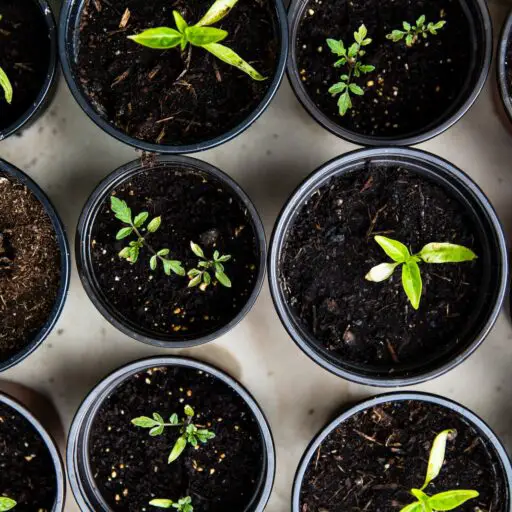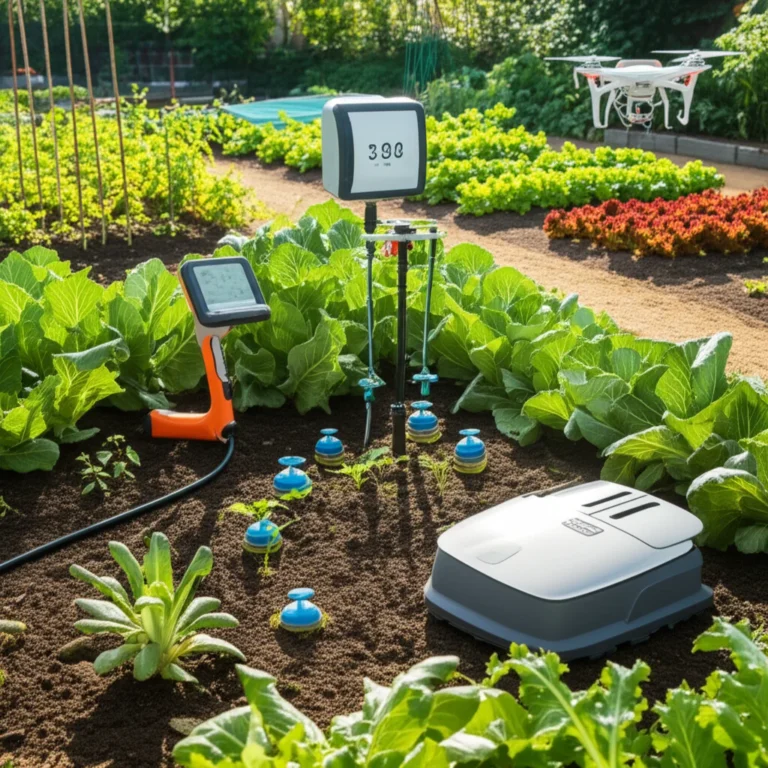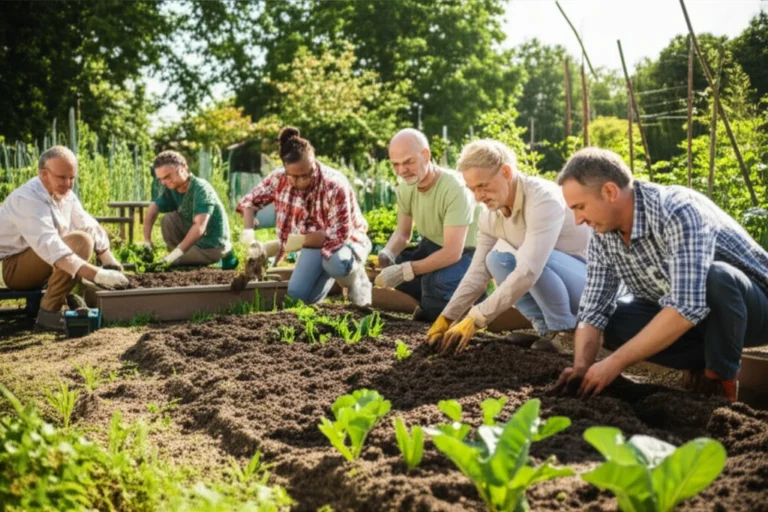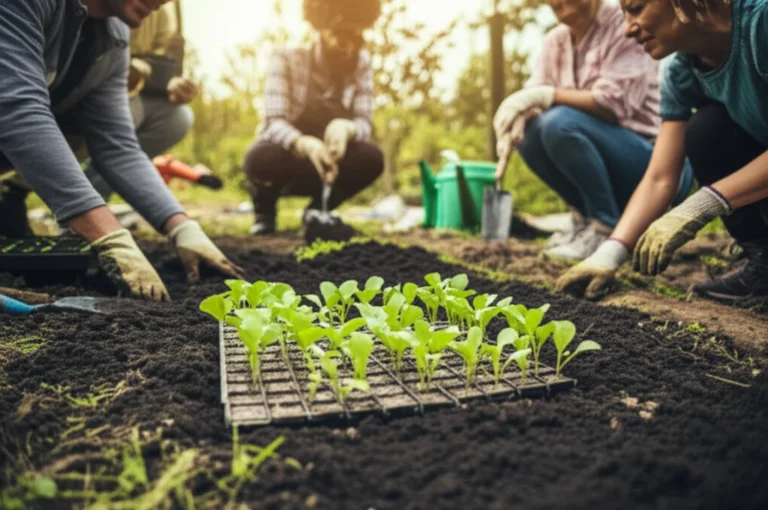Support our educational content for free when you purchase through links on our site. Learn more

Imagine stepping into a vibrant patch of green nestled right in the heart of your city—a place buzzing with life, laughter, and the earthy scent of fresh soil. That’s the magic of a community garden, a space where neighbors grow more than just plants; they grow connections, health, and hope. But you might be wondering, can anyone just walk in? Or is it a private club for seasoned gardeners?
In this article, we’ll uncover everything you need to know about community gardens in 2025—from who can visit and how to get involved, to the surprising social and environmental benefits these gardens bring to urban life. Plus, we’ll share insider tips, real stories, and even a toolkit to help you dive into your local garden scene with confidence. Ready to find out why community gardens are the ultimate ‘third place’ everyone should experience?
Key Takeaways
- Community gardens are generally open places where people can visit, volunteer, or join as members, but access rules vary by location.
- They serve as vital ‘third places’ fostering social connection, mental wellbeing, and urban sustainability.
- Getting involved usually means finding a local garden, attending an orientation, and sometimes renting a plot or volunteering.
- Community gardens offer educational workshops, social events, and therapeutic benefits beyond just growing food.
- Challenges like theft and water access exist but are overcome with strong community leadership and partnerships.
- For new gardeners, essential tools like Atlas Nitrile Gloves and Fiskars hand trowels make a great start.
👉 CHECK PRICE on:
- Atlas Nitrile Garden Gloves: Amazon | Walmart
- Fiskars Hand Trowel: Amazon | Fiskars Official Website
Dive in and discover how community gardens can become your next favorite place to grow, connect, and thrive!
Table of Contents
- ⚡️ Quick Tips and Facts About Community Gardens
- 🌱 Growing Roots: The History and Evolution of Community Gardens
- 🏡 What Exactly Is a Community Garden? Defining the Space
- 🚶♂️ Can Anyone Visit a Community Garden? Access and Inclusivity Explored
- 🌿 7 Reasons Why Community Gardens Are More Than Just Green Spaces
- 🛠️ How to Get Involved: Joining and Participating in Your Local Community Garden
- 🌎 Community Gardens as Social Hubs: Building Connections and ‘Third Places’
- 🌞 Seasonal Tips: When and How to Visit Community Gardens for the Best Experience
- 🌻 What to Expect When You Visit: Etiquette and Activities in Community Gardens
- 📋 Community Gardening Toolkit: Essential Tools and Resources for Visitors and Gardeners
- 🌐 Connecting with Local Extensions and Community Gardening Networks
- 📊 The Impact of Community Gardens on Urban Life and Wellbeing
- 🧩 Common Challenges and How Community Gardens Overcome Them
- 🎉 Events and Workshops: Engaging with Community Gardens Beyond the Soil
- 💡 Innovative Community Garden Models Around the World
- 🔚 Conclusion: Why Community Gardens Are a Must-Visit for Everyone
- 🔗 Recommended Links for Community Garden Enthusiasts
- ❓ FAQ: Your Burning Questions About Community Gardens Answered
- 📚 Reference Links and Further Reading
⚡️ Quick Tips and Facts About Community Gardens
Welcome to the green heart of neighborhoods everywhere! If you’ve ever wondered, “Is a community garden a place people can go?”, the answer is a resounding YES — but there’s so much more to it. At Community Gardening™, we’ve seen firsthand how these spaces blossom into vibrant hubs for growing food, friendships, and fun.
What You Need to Know Right Now
- ✅ Community gardens are public or semi-public spaces where neighbors grow food, flowers, and herbs together or in individual plots.
- ✅ They often welcome visitors, volunteers, and new gardeners — but some require membership or plot rental.
- ✅ These gardens serve as ‘third places’ — social spaces outside home and work where people connect.
- ✅ Many community gardens host events, workshops, and volunteer days.
- ✅ Accessibility varies: some have raised beds for wheelchair users or those with limited mobility.
- ✅ Gardens are usually managed by local committees or nonprofits and may have rules about visiting hours and activities.
- ✅ They’re great for urban dwellers without private garden space, offering fresh produce and a slice of nature.
Want to dive deeper? Check out our related article on are community gardens free to understand access and costs.
🌱 Growing Roots: The History and Evolution of Community Gardens

Community gardens aren’t just trendy green spots; they’re rooted in history and culture. Let’s dig into how these spaces evolved.
A Brief Timeline of Community Gardens
- Late 19th Century: Urban gardening sprouts as a response to industrialization and food scarcity.
- World Wars I & II: “Victory Gardens” pop up nationwide, encouraging citizens to grow their own food.
- 1970s: Urban renewal projects and economic recessions spark new community garden initiatives, like Detroit’s “Farm-A-Lot” program.
- 1990s–Present: Community gardens flourish globally, emphasizing sustainability, food justice, and social cohesion.
Why History Matters
Understanding the roots helps us appreciate how community gardens serve multiple roles — from food production to social activism. For example, Detroit’s urban gardens helped neighborhoods recover from economic hardship by turning vacant lots into thriving green spaces (Great Lakes Now).
🏡 What Exactly Is a Community Garden? Defining the Space
Community gardens come in many shapes and sizes, but what makes a garden community?
Core Features
- Shared or individual plots: Some gardens assign individual plots to families or gardeners, while others work communally.
- Managed by locals: Usually run by garden committees or nonprofits, with rules and schedules.
- Located in urban or rural areas: Often on vacant lots, church grounds, schools, or parks.
- Purpose: Grow food, flowers, herbs, or provide educational and therapeutic benefits.
Types of Community Gardens
| Type | Description | Example Use Case |
|---|---|---|
| Individual Plot Gardens | Gardeners maintain their own plots, harvest their own produce. | Family vegetable plots |
| Communal Gardens | Shared work and harvest, often donating produce to food pantries. | Food pantry gardens |
| Youth/School Gardens | Educational spaces for children to learn about plants and nutrition. | Schoolyard gardens |
| Therapy Gardens | Designed for horticultural therapy for seniors, patients, or veterans. | Hospital or senior center gardens |
| Demonstration Gardens | Showcases gardening techniques, open to the public for learning. | Botanical garden sections |
🚶♂️ Can Anyone Visit a Community Garden? Access and Inclusivity Explored
Here’s the million-dollar question: Can you just stroll into a community garden?
Visitor Access: The Reality
- Most community gardens welcome visitors during daylight hours for tours, events, or casual visits.
- Some require permission or membership to tend plots or harvest produce.
- Rules vary widely: Some gardens have open gates; others have locked fences for security.
- Accessibility: Many gardens are working on making spaces accessible for all, including raised beds and wheelchair-friendly paths.
Insider Tip from Community Gardening™
We’ve seen gardens that encourage visitors to come for workshops, volunteer days, or seasonal festivals — a great way to get your foot in the garden gate! Always check the garden’s website or contact the garden manager before visiting to respect their policies.
🌿 7 Reasons Why Community Gardens Are More Than Just Green Spaces
Community gardens are like Swiss Army knives of urban life — multifunctional and invaluable. Here’s why they’re so much more than dirt and plants:
- Grow Fresh, Healthy Food: Access to fresh fruits and veggies boosts nutrition, especially in food deserts.
- Build Community Bonds: Gardens foster friendships, teamwork, and cultural exchange.
- Provide Educational Opportunities: From kids to adults, gardens teach about ecology, nutrition, and sustainability.
- Enhance Mental Health: Gardening reduces stress and combats loneliness (Michigan State University research).
- Beautify Neighborhoods: Transforming vacant lots into lush gardens improves property values and pride.
- Support Environmental Sustainability: Gardens promote composting, pollinator habitats, and reduce food miles.
- Serve as ‘Third Places’: Neutral, welcoming spaces outside home and work where people gather and connect.
🛠️ How to Get Involved: Joining and Participating in Your Local Community Garden
Ready to roll up your sleeves? Here’s how to jump into the community gardening scene.
Step-by-Step Guide
- Find a Garden Near You: Use local extension services, community boards, or websites like American Community Gardening Association.
- Attend an Orientation or Meeting: Many gardens hold info sessions or open houses.
- Apply for a Plot or Volunteer: Some gardens require applications, fees, or agreements.
- Learn the Rules: Understand watering schedules, pest management, and plot maintenance expectations.
- Get Your Hands Dirty: Start planting, composting, and connecting with fellow gardeners.
- Join Events and Workshops: Boost your skills and social network.
Tools You Might Need
- Gloves (we love Atlas Nitrile Garden Gloves for durability)
- Hand trowel and cultivator (brands like Fiskars offer reliable options)
- Watering can or hose
- Kneeling pad or garden stool for comfort
👉 CHECK PRICE on:
- Atlas Nitrile Garden Gloves: Amazon | Walmart
- Fiskars Hand Trowel: Amazon | Fiskars Official Website
🌎 Community Gardens as Social Hubs: Building Connections and ‘Third Places’
Community gardens are often called ‘third places’ — social spaces beyond home and work where people gather, share, and grow together.
Why ‘Third Places’ Matter
- They combat social isolation, especially in urban environments.
- Provide a neutral ground for diverse groups to meet.
- Encourage cultural exchange through shared gardening traditions.
- Foster a sense of belonging and ownership in the neighborhood.
Real-Life Story
One of our gardeners, Ms. M, a 68-year-old Detroit resident, joined a garden Build Crew to meet new people and stay active after caregiving for her mother. She says, “Hard times bring people together,” highlighting how gardens can be lifelines for community connection (Great Lakes Now).
🌞 Seasonal Tips: When and How to Visit Community Gardens for the Best Experience
Timing your visit can make all the difference! Here are our seasonal tips:
| Season | What to Expect | Best Activities |
|---|---|---|
| Spring | Planting season, soil prep, early blooms | Volunteer planting days, workshops |
| Summer | Peak growth, harvest time | Picking produce, social events |
| Fall | Final harvest, composting, cleanup | Seed saving, garden parties |
| Winter | Dormant period, planning for next year | Indoor workshops, garden planning |
Pro Tips
- Visit during community events for a richer experience.
- Bring water and sun protection in summer.
- Wear sturdy shoes and check for garden hours.
🌻 What to Expect When You Visit: Etiquette and Activities in Community Gardens
Visiting a community garden is like stepping into a neighbor’s backyard — with a few extra rules.
Garden Etiquette
- Ask before harvesting: Only pick from your plot or with permission.
- Respect tools and equipment: Use shared tools responsibly and return them.
- Keep noise to a minimum: Gardens are peaceful spaces.
- Dispose of trash properly: Leave no trace.
- Follow posted rules: Each garden has its own guidelines.
Common Activities for Visitors
- Guided tours
- Volunteer workdays
- Educational workshops
- Social gatherings and potlucks
- Seed swaps and plant sales
📋 Community Gardening Toolkit: Essential Tools and Resources for Visitors and Gardeners
Whether you’re a newbie or seasoned green thumb, having the right tools makes gardening a joy.
| Tool/Resource | Purpose | Recommended Brand/Source |
|---|---|---|
| Garden Gloves | Protect hands from dirt & cuts | Atlas Nitrile, Garden Genie |
| Hand Trowel & Cultivator | Planting and soil aeration | Fiskars, Corona |
| Watering Can or Hose | Irrigation | Dramm, Gilmour |
| Kneeling Pad | Comfort during planting | Ohuhu, Abco Tech |
| Compost Bin | Organic waste recycling | Envirocycle, FCMP Outdoor |
| Soil Test Kit | Check soil pH and nutrients | Luster Leaf, Rapitest |
Helpful Resources
- Local extension offices for soil testing and pest advice (MU Extension)
- Community Gardening™ articles on Garden Design Ideas
- Seed suppliers like Johnny’s Selected Seeds or Baker Creek Heirloom Seeds
🌐 Connecting with Local Extensions and Community Gardening Networks
Want to grow your garden knowledge and network? Local extension services and gardening organizations are gold mines.
Why Connect?
- Access expert advice on soil, pests, and plant selection.
- Find grants, workshops, and volunteer opportunities.
- Join community garden coalitions for advocacy and resources.
Top Resources
- University of Missouri Extension: Offers publications and support for Missouri gardeners (MU Extension).
- American Community Gardening Association: National network for community garden support (ACGA).
- Local Master Gardener Programs: Volunteer programs providing education and outreach.
📊 The Impact of Community Gardens on Urban Life and Wellbeing
Community gardens pack a punch far beyond their fences. Here’s what research and experience tell us:
Benefits at a Glance
| Impact Area | Description & Evidence |
|---|---|
| Nutrition | Households involved consume 1.4 more servings of fruits/veggies daily (UMN Study) |
| Mental Health | Gardening reduces stress, anxiety, and loneliness (MSU Research) |
| Social Cohesion | Builds trust and cooperation among neighbors |
| Environmental | Promotes biodiversity, composting, and reduces urban heat |
| Economic | Increases property values and reduces food costs |
Anecdote from Our Gardeners
One gardener shared how joining a community garden helped her overcome isolation during the pandemic, providing fresh air, purpose, and new friends. That’s the magic of these spaces!
🧩 Common Challenges and How Community Gardens Overcome Them
Not all roses without thorns! Community gardens face hurdles, but with teamwork, they thrive.
Typical Challenges
- Volunteer turnover: Keeping members engaged year-round can be tough.
- Theft and vandalism: Gardens on borrowed land are vulnerable.
- Water access: Sometimes limited or costly.
- Skill gaps: New gardeners may need training.
- Site permanency: Many gardens lack long-term land security.
Solutions & Strategies
- Strong leadership and committees to share responsibilities.
- Security measures: Fencing, lighting, and community watch.
- Educational programs: Workshops and mentoring for new gardeners.
- Partnerships: With nonprofits, local government, and businesses for funding and land access.
- Raised beds and accessibility features to welcome all gardeners.
🎉 Events and Workshops: Engaging with Community Gardens Beyond the Soil
Community gardens are buzzing with more than just bees! Events and workshops bring people together and deepen gardening skills.
Popular Event Types
- Planting and harvest festivals
- Seed swaps and sales
- Composting and soil health workshops
- Cooking demonstrations using garden produce
- Children’s gardening classes
- Garden tours and open houses
Why Attend?
- Learn new skills
- Meet fellow gardeners and neighbors
- Support garden fundraising
- Experience the joy of community celebration
Check out our Community Garden Events for upcoming happenings near you!
💡 Innovative Community Garden Models Around the World
Community gardens come in all flavors — here are some inspiring models shaking up the scene globally:
| Model | Location/Example | Unique Feature |
|---|---|---|
| Edible Schoolyards | Berkeley, CA, USA | Integrates gardening into school curriculum |
| Therapeutic Gardens | UK hospitals | Horticultural therapy for patients |
| Market Gardens | Urban centers worldwide | Combines gardening with entrepreneurship |
| Vertical Gardens | Singapore, Tokyo | Space-saving, high-tech urban farming |
| Community Compost Hubs | Various cities | Shared composting to reduce waste |
These models show how community gardens can adapt to different needs and environments, inspiring us to think outside the planter box!
🔚 Conclusion: Why Community Gardens Are a Must-Visit for Everyone

So, is a community garden a place people can go? Absolutely! These green sanctuaries are open doors to fresh air, fresh food, and fresh friendships. Whether you’re looking to grow your own veggies, learn new skills, or simply find a peaceful spot to connect with neighbors, community gardens deliver on all fronts.
From our experience at Community Gardening™, the magic lies in their accessibility, inclusivity, and vibrant social life. While some gardens may require membership or plot rental, many welcome visitors for tours, events, and volunteer days. They truly are the ‘third places’ where communities grow stronger together.
We’ve also seen how gardens overcome challenges like theft, volunteer turnover, and water access through strong leadership, community engagement, and creative solutions. Plus, innovative garden models worldwide inspire us to keep evolving these spaces for everyone’s benefit.
If you’re on the fence about visiting or joining a community garden, take the plunge! Start by finding a local garden, attend a meeting or event, and experience firsthand the joy and impact of growing together.
🔗 Recommended Links
Ready to get your hands dirty? Here are some tools and resources we recommend for your community gardening journey:
- Atlas Nitrile Garden Gloves:
Amazon | Walmart - Fiskars Hand Trowel:
Amazon | Fiskars Official Website - Johnny’s Selected Seeds:
Johnny’s Official Website | Amazon - Baker Creek Heirloom Seeds:
Baker Creek Official Website | Amazon - Ohuhu Kneeling Pad:
Amazon | Walmart
Books to Grow Your Knowledge
- The Community Gardening Handbook by Ben Raskin — A practical guide to starting and sustaining community gardens.
- Urban Gardening: How to Grow Food in the City by David Tracey — Inspiring stories and tips for city gardeners.
- The Garden Primer by Barbara Damrosch — A comprehensive gardening bible for all skill levels.
❓ FAQ: Your Burning Questions About Community Gardens Answered

What are the benefits of participating in a community garden?
Participating in a community garden offers a bouquet of benefits:
- Health and Nutrition: Access to fresh, organic produce improves diet quality. Studies show families involved consume more fruits and vegetables daily (UMN Study).
- Mental Wellbeing: Gardening reduces stress and loneliness, fostering a sense of purpose and calm (MSU Research).
- Social Connection: Gardens create ‘third places’ where people from diverse backgrounds meet, share, and build community bonds.
- Environmental Impact: Promotes biodiversity, composting, and sustainable urban land use.
- Skill Development: Learn horticulture, leadership, and teamwork.
Read more about “15 Surprising Benefits of Gardening You Need to Know in 2025 🌿”
How do I find a community garden near me to get involved?
Finding your local garden is easier than you think:
- Check with your city parks and recreation department or local extension office for listings.
- Use online directories like the American Community Gardening Association.
- Visit community centers, libraries, or neighborhood associations for flyers or announcements.
- Social media groups and local gardening clubs often share opportunities.
Once you find a garden, reach out to the garden coordinator or attend an open event to learn how to join.
Read more about “10 Urban Agriculture Initiatives Transforming Our Cities 🌱”
What types of activities can I expect to do in a community garden?
Community gardens offer a variety of activities beyond planting:
- Tending individual or shared plots: Planting, weeding, watering, and harvesting.
- Composting and soil care: Learning to recycle organic waste into rich soil.
- Educational workshops: Topics like pest management, seed saving, and cooking with garden produce.
- Community events: Potlucks, festivals, seed swaps, and volunteer days.
- Socializing and networking: Meeting neighbors and sharing gardening tips.
Read more about “🌱10 Ways to Fund Your Community Garden”
Can anyone join a community garden, or are there specific requirements?
Most community gardens welcome new members, but requirements vary:
- Some gardens have open membership with no fees, while others charge plot rental fees to cover water and maintenance.
- Many require signing a garden agreement outlining rules for plot care, water use, and behavior.
- Some gardens prioritize local residents or specific groups (e.g., seniors, youth).
- Accessibility accommodations may be available for gardeners with disabilities.
It’s best to contact the garden directly to understand their policies and how to get involved.
How do community gardens handle challenges like theft or vandalism?
Security is a common concern. Gardens often:
- Install fencing and lighting to deter trespassers.
- Encourage community watch and regular visits to keep eyes on the garden.
- Grow less “high-value” crops in vulnerable areas or stagger planting times.
- Work with local law enforcement and neighbors to report suspicious activity.
Strong community engagement is the best defense — the more connected gardeners are, the safer the garden.
📚 Reference Links and Further Reading
- University of Missouri Extension: What is a Community Garden?
- University of Minnesota: 7 Effective Steps to Start a Community Garden
- Great Lakes Now: How community gardens serve as ‘third places’ for Detroiters
- American Community Gardening Association: Community Gardening Resources
- Michigan State University: Community Gardens as Third Places
- Fiskars Official Website: Fiskars Gardening Tools
- Johnny’s Selected Seeds: Johnny’s Official Website
- Baker Creek Heirloom Seeds: Rare Seeds
We hope this guide has you inspired and ready to explore the wonderful world of community gardens. Remember, these spaces are not just plots of land — they’re places where people grow together, learn together, and thrive together. 🌻🌿 Happy gardening!





